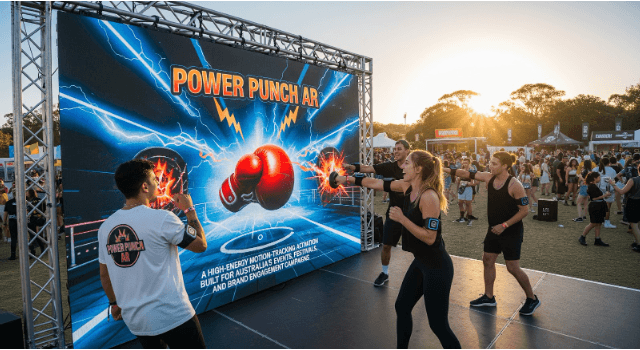Top Use Cases of AR Treasure Hunt Games: Revolutionizing Engagement Across Industries
Apr 29, 2025
Image sourced from Google
Augmented Reality (AR) treasure hunt games are more than just entertaining tech novelties—they’re powerful tools transforming how brands, educators, and event organizers in Australia engage with audiences. By combining physical spaces with digital overlays, AR treasure hunts offer interactive, location-based experiences that captivate users and drive real-world action.
In this blog, we explore the top use cases of AR treasure hunt games and how they’re redefining engagement across industries.
1. Retail & Shopping Malls: Boost Footfall and Sales
AR treasure hunts in malls and retail outlets create an engaging way to drive customer traffic to specific stores or product displays. Users scan QR codes or use AR apps to find clues and unlock offers, leading to:
Increased time spent in-store
Gamified product discovery
Higher likelihood of impulse purchases
Example: A mall launches a holiday-themed AR hunt where users collect digital ornaments to redeem festive discounts.
2. Tourism & Cultural Attractions: Enhancing Visitor Experiences
Tourism boards and museums use AR treasure hunts to tell stories of historic landmarks, artifacts, or hidden gems in a city. This turns a casual walk into an immersive learning adventure.
Interactive city tours
Encourages exploration of lesser-known sites
Educational storytelling using AR overlays
Example: A heritage trail where visitors unlock hidden stories of landmarks through their phones as they follow digital clues.
3. Corporate Events & Team Building: Fostering Collaboration
Companies use AR scavenger hunts for team bonding and engagement during off-sites or onboarding programs. These interactive games encourage problem-solving and collaboration in a fun format.
Improves teamwork and communication
Customizable for brand or learning goals
Encourages physical activity and exploration
Example: A company conference app integrates an AR challenge to lead employees to key booths, sponsors, and breakout sessions.
4. Education & Edutainment: Making Learning Fun
Educational institutions and edtech companies leverage AR treasure hunts to teach concepts in science, history, or language through storytelling and gamified quests.
Encourages active participation
Increases knowledge retention
Blends curriculum with interactive play
Example: A biology class uses AR to find hidden "cells" around school, unlocking facts about human anatomy with each discovery.
5. Festivals & Public Events: Engaging Crowds Creatively
At music festivals, carnivals, and exhibitions, AR treasure hunts can keep visitors engaged across large venues. Organizers place clues at food stalls, stages, or installations.
Enhances attendee engagement
Collects valuable user data
Promotes sponsors and partners through in-game branding
Example: A music festival AR game where fans collect virtual items related to performing artists for a chance to win VIP upgrades.
6. Real Estate & Property Showcases: Interactive Site Tours
Real estate companies are using AR treasure hunts during open houses or show launches to make property visits memorable and interactive.
Guides potential buyers through key features
Increases dwell time on-site
Adds a unique storytelling layer to the property
Example: Buyers search for AR-activated hotspots that reveal hidden features like smart home automation or sustainability measures.
7. Brand Activation & Product Launches: Driving Buzz
Whether launching a new beverage or tech gadget, brands use AR treasure hunts to drive online-offline engagement. These campaigns can integrate social media sharing and influencer tie-ins.
Creates viral marketing potential
Drives foot traffic to retail partners
Encourages social content generation





